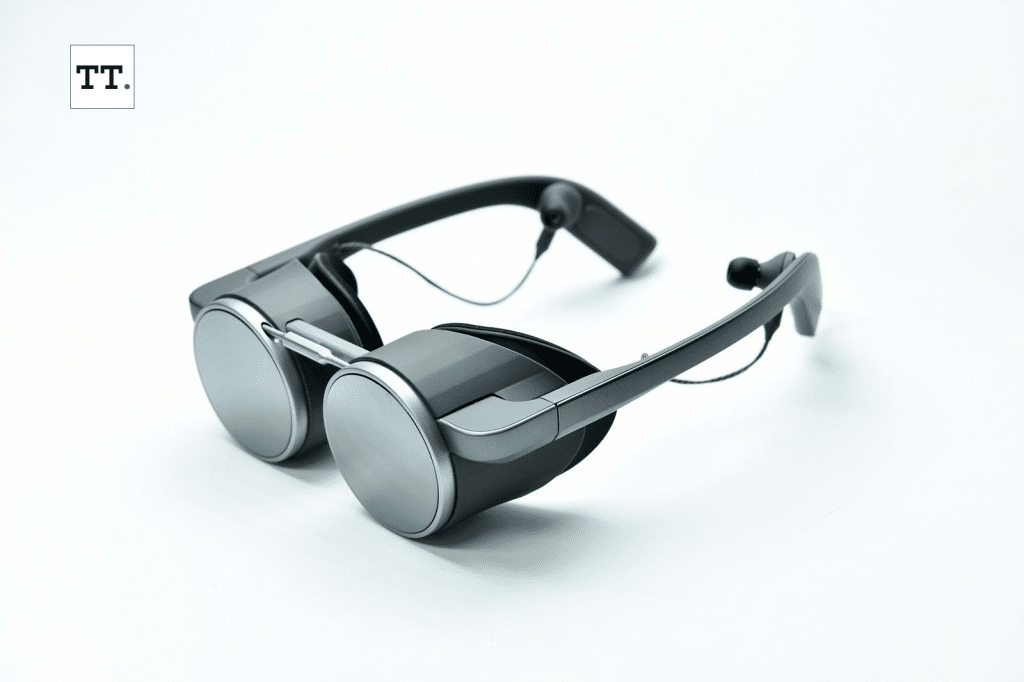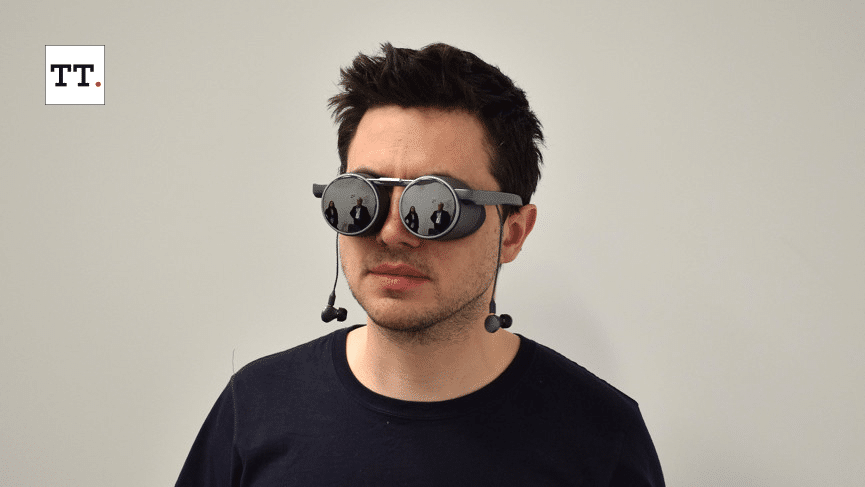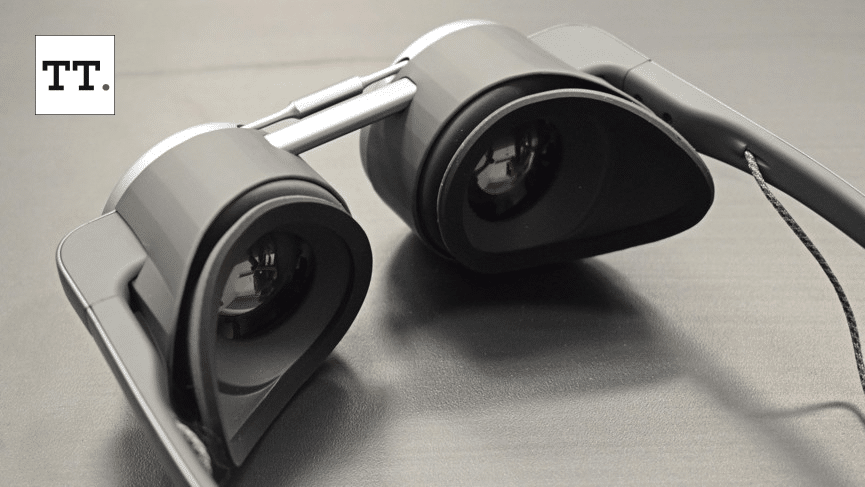First impressions of Panasonic VR glasses: Virtual reality has never looked so fantastic.
HDR meets the steampunk aesthetic.
When we originally heard about Panasonic’s virtual reality goggles idea, we assumed it would be months, if not years, before we saw them in the flesh.
We were giving them the complete test drive only hours later.
But first, a disclaimer: these VR glasses are still in the early stages of development, and although we were allowed to check out a few demonstrations, Panasonic said that nothing would be available for at least a year-if that. It wanted to get feedback from the best tech minds in the business, including us, as do many other companies at CES.
But why should we care so much about Panasonic’s glasses in a room full of copycat VR headsets? They certainly seem to be insane. When compared to these steampunk spectacles, the hefty VR visors we’re accustomed to from firms like Oculus and Valve appear like space trash.
Panasonic’s glasses, on the other hand, should be able to accomplish everything that headsets do, only better. In actuality, the goggles in our demo were connected to a computer and ran on Steam VR.

Inside, the graphics are just as stunning: the resolution is now 2K x 2K per eye, but Panasonic claims that 2.6K x 2.6K is on the way. Panasonic’s goggles are also the first VR eyewear to support HDR, which results in higher contrasts and more vibrant colours, as seen in a few brief video demonstrations, including one of a CG representation of a Japanese temple.
They lacked the most in the field of vision department, which was just approximately 70 degrees diagonally and not really outstanding. We also had trouble keeping the goggles on our faces because of their front-heavy design, which led them to slide down our noses.
However, we acknowledge that these are still early stages of development, and Panasonic also let us test a wireless prototype that was much more balanced. That one also has a USB-C connector on the rear to show how these glasses may be powered by a smartphone in the future (5G is coming, remember).
During my presentation, I asked several questions, many of which were around whether Panasonic was contemplating particular features or uses, and the response was invariably yes. It’s one of the reasons I’m cautiously hopeful here: Panasonic has a fantastic toy with no obvious use.
Panasonic’s AV Technology Alliance’s general manager, Ichiro Kashiwagi, told me they’re thinking of adding AR cameras to the goggles so they can be worn outdoors. They’d give Magic Leap a good run for their money.

In fact, there was a lot of discussion about mobile use cases and reducing the stigma associated with mobile VR through dressing up.
Panasonic also used its Technics brand for the music, which is delivered via built-in headphones. A second connected headset was put aside for an audio demonstration, and everything sounded fantastic.
The team then says they want to include 6DoF monitoring (the prototype was only running 3DoF, so I could look around but couldn’t walk about). Making them run on a smartphone or even an internal battery is definitely going to be a lot simpler. Panasonic claims that it is now examining all options.
The issue is whether this will ever become a consumer product. It’s not a guarantee, and the business claims it’s looking at commercial uses right now. Kashiwagi says if it makes it to a consumer gadget, they’ll aim at $1000, which is a lot of money but not nearly as much as the Valve Index.
First impressions
Panasonic has achieved the unthinkable by creating a virtual reality headset that is somewhat trendy. However, it’s unclear where the corporation will take them since it seems that all options are on the table. Let’s hope Panasonic perfects them into a VR headset we can use—and look nice in while doing so.


